I have 15 plots that I need to display, which I iterate through in a for list like so:
### Plotting that does not work
plots <- c()
for (i in colnames(dataframeselect)){
current_col <- dataframeselect[i]
plots <- c(plots, ggplot(dataframeselect, aes_string(colnames(current_col))) + geom_histogram())
}
ggarrange(plotlist = plots)
While I can iterate and create plots individually I can't manage to create a plot list, that I can then pass to ggarrange.
I now have to resort to create 15 variables, which gets the job done fine but is somewhat tedious and not DRY-friendly:
### Plotting that works
my_plot <- function(column) ggplot(dataframeselect, aes_string(x = column)) + geom_histogram()
p1 <- my_plot("W3_f15771g")
p2 <- my_plot("W3_f15771a")
p3 <- my_plot("W3_f15771b")
#...
ggarrange(p1,p2,p3)
Please note that there is a question already being asked, but none of those answers use a for loop in order to get the desired result: Lay out multiple ggplot graphs on a page
The warning that I get is the following:
Cannot convert object of class FacetNullFacetggprotogg into a grob.
44: In as_grob.default(plot) :
Cannot convert object of class environment into a grob.
45: In as_grob.default(plot) : Cannot convert object of class list into a grob.
46: In as_grob.default(plot) :
Cannot convert object of class tbl_dftbldata.frame into a grob.
47: In as_grob.default(plot) : Cannot convert object of class list into a grob.
48: In as_grob.default(plot) :
Cannot convert object of class ScalesListggprotogg into a grob.
49: In as_grob.default(plot) : Cannot convert object of class uneval into a grob.
50: In as_grob.default(plot) : Cannot convert object of class list into a grob.
What is interesting is that, whenever I add a new plot to my list, the count of the objects does not increment by 1 but by nine elements. So by looking at the plots variable, I see that it is a big mess not of some plot objects but of all the fragments from all the plots I wanted to add:
So I am wondering how to somehow put the plot inside some sub-container that it then can be used by ggarrange.



